Welcome to the ultimate guide to A/C system maintenance! In this comprehensive article, we will explore the key steps and techniques you need to know to keep your air conditioning system in optimal condition. By following these maintenance practices, you can ensure the longevity, efficiency, and performance of your A/C unit. So, let’s dive right in and learn how to take care of your cooling system effectively.
Understanding the Importance of A/C System Maintenance
Regular maintenance of your A/C system is crucial to ensure its smooth operation and efficiency. Neglecting maintenance can lead to reduced cooling performance, higher energy bills, and even costly repairs. By investing time and effort into maintaining your A/C system, you can prevent potential problems, improve indoor air quality, and extend the lifespan of your unit.
Regular Cleaning of Air Filters
One of the simplest yet most effective maintenance tasks is regularly cleaning or replacing the air filters. Dirty filters restrict airflow and force the system to work harder, reducing its efficiency. Aim to clean or replace the filters every 1-2 months, or as recommended by the manufacturer, to maintain optimal performance.
Checking and Cleaning the Condenser Coils
The condenser coils play a crucial role in transferring heat from the inside of your home to the outside. Over time, these coils can accumulate dirt, debris, and even grime, hindering their ability to release heat effectively. Regularly inspecting and cleaning the condenser coils will ensure efficient heat transfer and prevent system breakdowns.
Clearing Debris from the Condenser Unit
The condenser unit, located outside your home, is exposed to the elements and can collect debris such as leaves, twigs, and dirt. It is important to keep the area around the unit clear and remove any obstructions that might hinder its performance. Regularly clean the condenser unit to maintain unrestricted airflow and prevent overheating.
Inspecting and Cleaning the Evaporator Coils
The evaporator coils are responsible for absorbing heat from the air inside your home. Over time, these coils can accumulate dust and dirt, affecting their ability to cool the air efficiently. Regular inspection and cleaning of the evaporator coils will improve their performance and prevent issues like frozen coils or reduced cooling capacity.
Cleaning the Condensate Drain Line
The condensate drain line removes excess moisture produced during the cooling process. If this line becomes clogged or blocked, it can lead to water leaks or even water damage. Regularly cleaning the condensate drain line ensures proper drainage and prevents potential issues associated with moisture buildup.
Checking and Lubricating Fan Motorscartoon-blue-snowflake-red-flame-Oboys-ac-system-maintenance-guide
The fan motors in your A/C system require proper lubrication to operate smoothly. Lack of lubrication can cause friction and lead to motor failure. Regularly inspecting the fan motors and adding lubrication as needed will help reduce strain on the motors and extend their lifespan.
Verifying the Refrigerant Levels
Optimal refrigerant levels are essential for the efficient operation of your A/C system. Low refrigerant levels can indicate a leak or other underlying issues. It is important to have a professional technician check and adjust the refrigerant levels to ensure proper cooling performance and energy efficiency.
Assessing and Adjusting Thermostat Settings
The thermostat acts as the control center for your A/C system. Periodically assess and adjust the thermostat settings to optimize comfort and energy usage. Consider using programmable thermostats that allow you to set different temperatures for various times of the day, enabling better energy management.
Inspecting Electrical Connections
Loose or faulty electrical connections can pose a safety risk and lead to system malfunctions. Regularly inspect the electrical connections of your A/C system, including wiring, terminals, and contacts. If you notice any issues, contact a professional electrician or HVAC technician to address them promptly.
Tightening and Replacing Belts
Belts in your A/C system can become loose or worn out over time, affecting the system’s performance. Regularly inspect the belts and tighten or replace them as needed. Well-maintained belts ensure the proper functioning of the blower and other components, reducing the risk of breakdowns.
Testing Capacitors and Relays
Capacitors and relays are vital components that help start and run your A/C system. Testing these components periodically can identify any faults or malfunctions. If any issues are detected, it is recommended to consult a professional technician for proper diagnosis and replacement.
Examining Ductwork for Leaks
Leaky ductwork can result in reduced airflow, energy loss, and uneven cooling in your home. Inspect the ductwork for any visible leaks, gaps, or loose connections. Sealing or repairing the ductwork will enhance system efficiency and improve indoor comfort.
Ensuring Proper Airflow and Ventilation
Proper airflow and ventilation are essential for efficient cooling. Check and clean the vents, registers, and grilles to remove any obstructions that might hinder airflow. Additionally, ensure that furniture or other objects do not block the air vents, allowing the conditioned air to circulate freely.
Scheduling Professional A/C System Maintenance
While many maintenance tasks can be performed by homeowners, it is advisable to schedule professional A/C system maintenance at least once a year. A trained technician can conduct a thorough inspection, identify any underlying issues, and perform necessary repairs or adjustments to keep your A/C system running optimally. Contact us today to schedule your a/c maintenance!
Conclusion
Regular maintenance of your A/C system is the key to its longevity, efficiency, and optimal performance. By following the steps outlined in this ultimate guide, you can ensure that your cooling system operates smoothly, saves energy, and provides a comfortable indoor environment. Remember, prevention is always better than cure when it comes to maintaining your A/C system.
